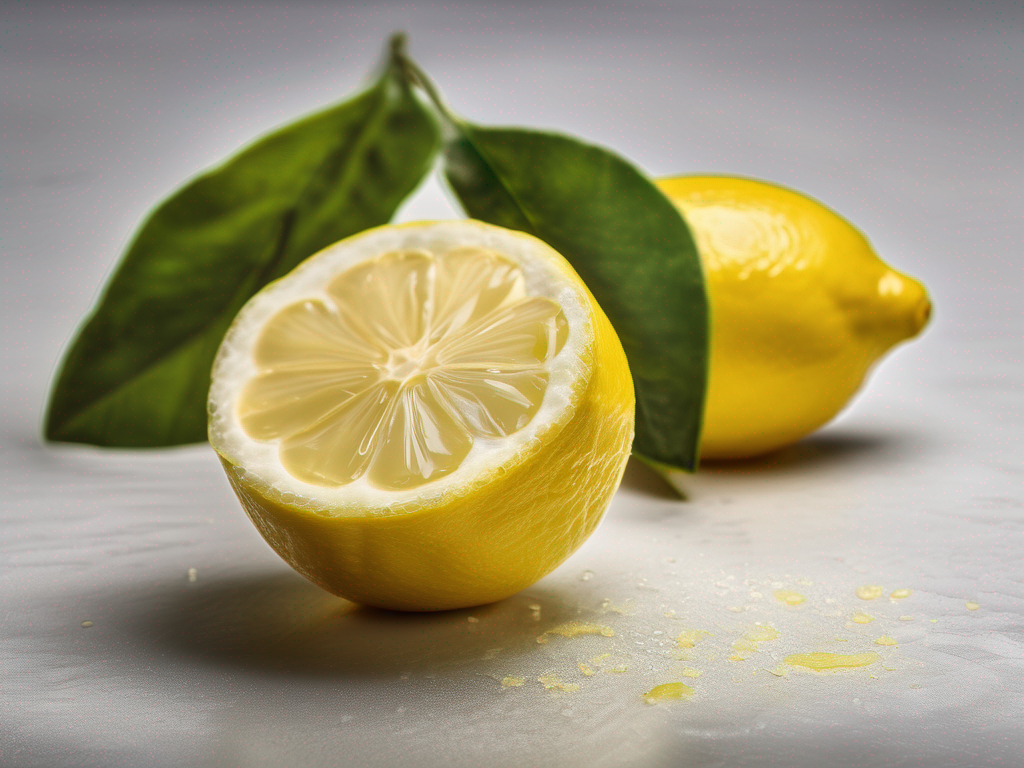
Extending the Shelf Life of Fresh Lemongrass: Tips and Tricks
Get Your Free Food Safety Cheat Sheet
30 most common foods with instant answers. Print it and stick it on your fridge—completely free!
Extending the Shelf Life of Fresh Lemongrass: Tips and Tricks
When it comes to enhancing the flavors and aromas of various dishes, lemongrass is a popular ingredient in many cuisines around the world. This versatile herb adds a unique citrusy and floral note to dishes, making it a favorite among chefs and home cooks alike. However, fresh lemongrass can deteriorate quickly if not stored properly. In this blog post, we will explore practical tips and tricks to extend the shelf life of fresh lemongrass, ensuring that you can enjoy its vibrant flavors for longer periods. (Lemon)
Understanding Lemongrass
Before we delve into storage methods, let's first understand what lemongrass is and why it requires specific care when storing. Lemongrass is a tropical herb with long, thin, and fibrous stalks that have a strong lemony flavor and aroma. It is commonly used in Asian cuisines, particularly in Thai, Vietnamese, and Indonesian dishes. Lemongrass is rich in essential oils, antioxidants, and vitamins, making it a beneficial ingredient for both culinary and medicinal purposes.
Why Proper Storage Matters
Fresh lemongrass, like many herbs and spices, is susceptible to moisture loss, mold growth, and flavor degradation if not stored correctly. Improper storage can lead to wilted, dry, or discolored lemongrass, which can affect the quality of your dishes. By following the right storage techniques, you can prolong the freshness and flavor of lemongrass, ensuring that it retains its aromatic qualities for an extended period.
Tips for Extending the Shelf Life of Fresh Lemongrass
To maximize the shelf life of fresh lemongrass, consider the following tips and tricks:
1. Choose Quality Lemongrass
Start by selecting fresh, vibrant lemongrass stalks with firm and pale-yellow bases. Avoid lemongrass with brown or wilted tops, as this indicates age and deterioration. Opt for organic lemongrass whenever possible to minimize exposure to pesticides and chemicals.
2. Trim and Prep Properly
Before storing lemongrass, trim off any dry or woody ends using a sharp knife or kitchen shears. Peel off any tough outer layers to reveal the tender inner stalks. This not only improves the appearance of the lemongrass but also allows for better flavor extraction when using it in recipes.
3. Store in the Refrigerator
One of the most effective ways to prolong the shelf life of fresh lemongrass is by storing it in the refrigerator. Follow these steps for optimal storage:
- Wrap the trimmed lemongrass stalks in a damp paper towel to maintain moisture.
- Place the wrapped lemongrass in a resealable plastic bag or an airtight container.
- Store the lemongrass in the vegetable crisper drawer of the refrigerator, where it is slightly humid and cool.
4. Freeze for Long-Term Storage
If you want to preserve lemongrass for an extended period, consider freezing it. Here's how you can freeze lemongrass for long-term storage:
- Cut the lemongrass into smaller pieces or mince it finely, depending on your preference.
- Place the chopped lemongrass in an airtight container or freezer-safe bag.
- Label the container with the date and store it in the freezer for up to six months.
5. Utilize Drying Methods
Another option for extending the shelf life of lemongrass is by drying it. You can air-dry or use a dehydrator to dry lemongrass for later use in teas, infusions, or spice blends. Ensure that the dried lemongrass is stored in a sealed container away from light and moisture to maintain its potency.
Conclusion
In conclusion, fresh lemongrass is a flavorful and aromatic herb that can elevate the taste of your dishes. By following proper storage techniques such as refrigeration, freezing, or drying, you can extend the shelf life of lemongrass and enjoy its vibrant flavors for longer periods. Remember to choose quality lemongrass, trim it properly, and store it in a cool, dry place to maintain its freshness. With these tips and tricks, you can make the most of this versatile herb in your culinary creations. Enjoy the citrusy goodness of lemongrass in your dishes while ensuring food safety and quality. (Lemon)
Authoritative Food Safety References
These agencies and university labs inform every tip and health precaution we publish.
USDA FoodKeeper – Cold Storage Guidelines
Official refrigerator, freezer, and pantry timelines maintained by the U.S. Department of Agriculture.
Visit USDA FoodKeeperFDA Produce Safety Rule & Grower Guidance
Field-to-fridge handling practices that prevent contamination of fruits, vegetables, and leafy greens.
Visit FDA Produce SafetyCDC Foodborne Illness Prevention Hub
Surveillance-backed guidance on pathogens, symptoms, and steps to reduce foodborne illness risk.
Visit CDC Food SafetyUC Davis Postharvest Technology Center
University research detailing optimal storage atmospheres for produce after harvest.
Visit UC Davis PostharvestPenn State Extension – Home Food Preservation & Safety
Peer-reviewed extension bulletins on safe canning, chilling, and reheating practices.
Visit Penn State ExtensionGet Your Free Food Safety Cheat Sheet
30 most common foods with instant answers. Print it and stick it on your fridge—completely free! Want more? Upgrade to the complete guide with 70+ foods.
Scan your food directly and get instant safety info using our AI-powered camera feature.